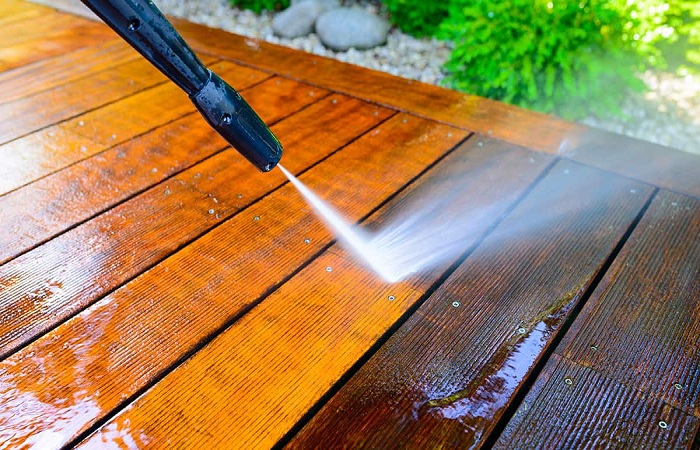Do you want this year’s stain or paint job on your deck to last longer than a year or two?
Most homeowners probably don’t look forward to staining or painting their deck because it’s just another duty. Even more so when the coating doesn’t last very long.
The good news is that you can keep your deck looking fantastic this summer and for many summers to come with some proactive upkeep. That being said, if you want your deck to last, here are five easy tips for staining or painting it.
Cleaning & Sanding
You must begin with a clean, flat surface if you want the stain or paint to last. That involves giving your deck, porch, or patio a little TLC before you paint the first stroke. The “C” in this example represents “cleaning.”
However, the quality of the finished paint job depends on how thoroughly you clean the surface. Sand down any splits or splinters first. A paint or stain coat won’t hide these flaws, thus fixing them is a prerequisite to covering. It’s also important to repair any rotten or damaged boards right away.
Afterward, you should give the deck a thorough cleaning. That helps get rid of mold and mildew as well as the dirt and grime that can prevent stain or paint from sticking.
A pressurized water is one of the best equipment for this job. While this is true, it is only useful if used properly. Carefully select a cleaning tip that won’t damage the wood as it does its job.
The optimal angle for the fan tip to do this is between 40 and 60 degrees. In a nutshell, it will provide the surface a rapid cleaning without subjecting it to a sandblasting-like water pressure. A more powerful stream of water from any source can swiftly rip through the wood, marring it beyond repair.
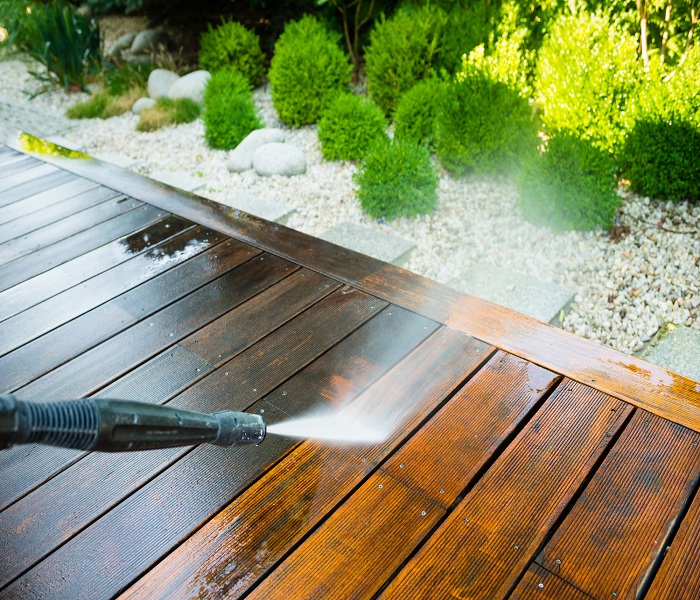
Let It Dry Out!
After cleaning your deck, it’s even more crucial to let the wood dry completely before applying any stain or paint. Not waiting for the wood to cure before applying paint or stain is a common cause of poor adhesion.
Simply put, you should never power wash in the morning and then stain or paint that same day. In fact, the wood probably won’t be totally dry until the next day.
The wood could look dry on the exterior, but it could still be storing moisture on the inside. Wet wood is the number one enemy of any paint or stain job. A little bit of patience will pay off in this situation.
After power washing, deck and patio wood needs at least two or three days to dry out completely. It could take a little longer to dry if it’s humid outside or if it rains in the meantime.
Using the Appropriate Coating
Choose the correct stain or paint if you want your newly coated surface to last.
There are some inflexible guidelines to follow when dealing with paint and stains. Understanding that the type of finish matters much for how long the paint or stain will last is just as important as choosing a high-quality paint or stain.
For one thing, solid stains last much longer than their transparent and semitransparent counterparts. Consider the three options as “good,” “better,” and “best” for the simplest mental organization.
- Choosing a Stain
The natural beauty of the wood’s grain will shine through when using a transparent stain. However, unlike a semitransparent or solid stain, this one won’t fade away easily.
The longest-lasting and most resilient coating is a full solid stain. Not only does it completely seal the wood, but it also makes it more impervious to the weather. The negative is that it covers as well as paint would, so the wood grain won’t show up as a detail.
In terms of protection and wood reveal, a semi-transparent stain is more of a middle ground. It can cover well but not as well as a solid stain, and it will reveal some of the wood’s natural texture.
While a transparent stain will reveal almost all of the wood’s natural beauty, it also offers the least long-term protection. It’s acceptable to use if you prefer the wood appearance; just keep in mind that you’ll probably need to reapply once a year, if not more often.
- Choosing a Paint
Similar considerations apply to paint finishes, which can range from flat to satin to semi-gloss to gloss. Gloss is indestructible and long-lasting because it has a higher surface tension. When it comes to keeping out moisture and UV rays, this shine is unrivaled and will last you much longer than the competition. It’s also the easiest of the four to clean.
Similar to high gloss, semi-gloss finishes protect wood very well. Next up is satin, and after that comes flat, both of which require more frequent applications than transparent stain.
It’s crucial to know what to expect from the paint you choose so that you can make an informed decision based on your desired look.
It’s important to remember that a solid stain or a gloss or semi-gloss paint is always the finest option for porch or deck floors. Floors require all the defense they can get against the constant foot traffic.
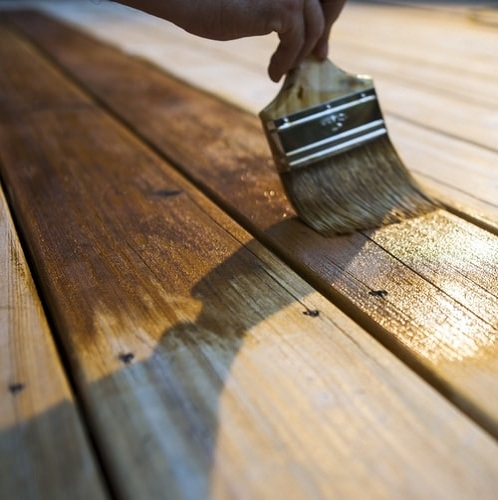
Invest in a Good Brush and Paint
The brush you use is just as crucial as the paint or stain you choose. Inadequate coverage and the need for multiple applications can result from using a subpar brush.
A brush with natural bristles is best for oil-based paints and stains. It is recommended that a synthetic-bristle brush be used when painting with latex (water-based) paints.
Maybe you could try spraying it instead. Although it might be effective, the best methods for complete adhesion are brushing and rolling. When painting or staining a deck, it’s much easier to get the paint or stain into the nooks and crannies.
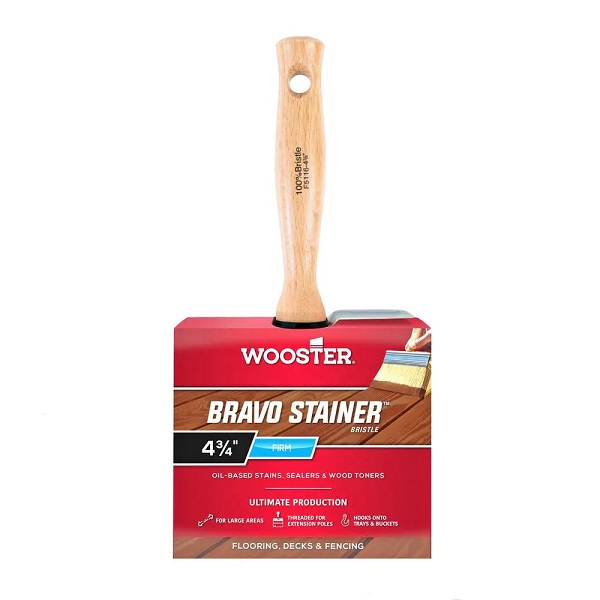
Frequency
Finally, one of the most important pieces of advice is to be consistent with your deck maintenance.
Many homeowners make the mistake of waiting too long between applications. Peeling, flaking, or fading of a covering exposes the underlying wood. It doesn’t take long for the rain and wind to wear down anything that isn’t covered.
Untreated wood is vulnerable to splitting, cracking, and warping. Boards, portions, or even the whole deck may need to be replaced.
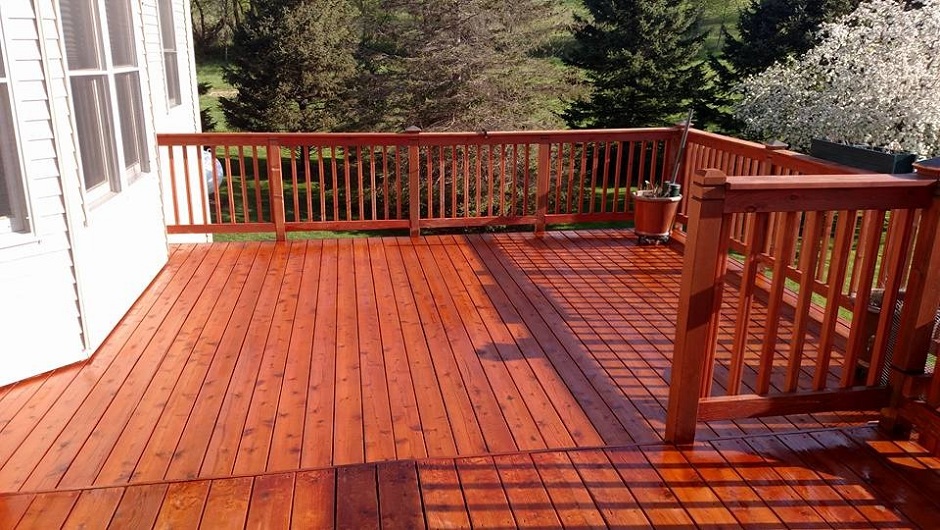
Consistency pays off
The task of maintaining a deck can be compared to that of weeding a garden. If you spend a few minutes a day in the garden, weeding never becomes a major hassle. Nonetheless, if you hold off for a few of weeks, you’ll be blown away when you finally venture out.
Staining a deck is maintained in the same way. As long as the deck planks are in excellent shape, applying a fresh coat of paint or stain every few years is usually not much of a hassle. However, if you let them chip, wear, and warp for too long, you will be confronted with a huge project.

